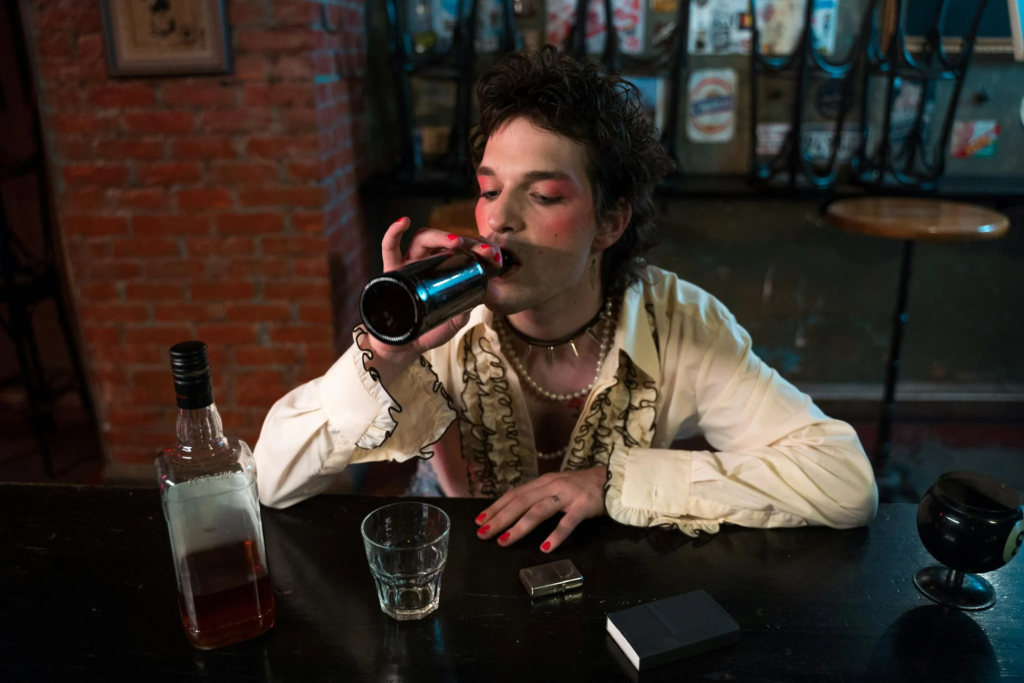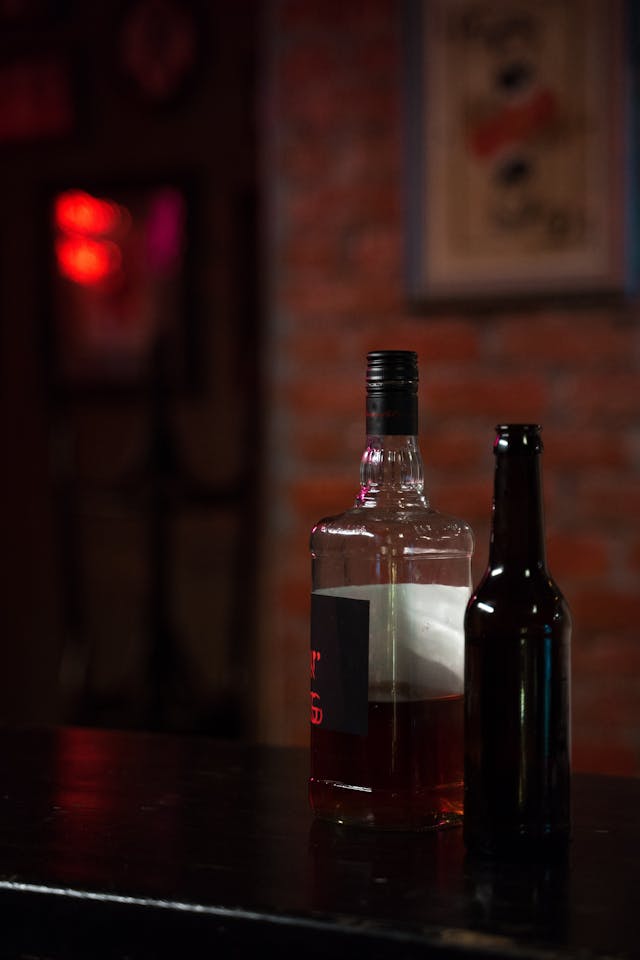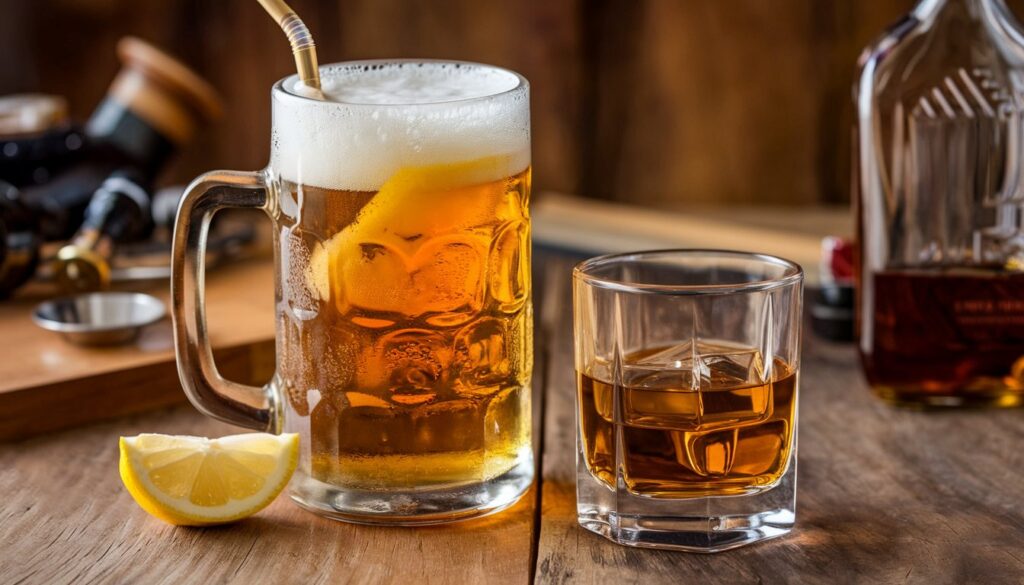Whiskey and beer are two iconic beverages with rich histories and devoted followings — share a deeper connection than most realize. From the smoky depths of a peaty Scotch to the malty embrace of a craft stout, these two worlds collide. The result is an unexpected and exciting fusion of flavors.
Whether through boilermaker pairings, barrel-aged brews, or experimental whiskey-beer cocktails, the fusion of these beloved drinks unlocks bold new flavors. With so many types of whisky available, from smooth bourbons to robust single malts, the possibilities for unique combinations are endless.
Join us as we dive into the fascinating relationship between whiskey and beer. Let’s uncover the best pairings, unique blends, and must-try combinations that will elevate your tasting experience.
The Rich History of Whiskey and Beer
Whiskey’s history, rooted in cultural traditions, goes back almost a thousand years. The term “whiskey” emerged around 1405 from the Gaelic “uisce.” Beer, however, has an even longer history. China first made it between 7000 and 6600 BCE, starting the brewing traditions.
The Old Bushmills Distillery, licensed in 1608 in Northern Ireland, is the oldest whiskey distillery worldwide. In 1791, America introduced the “Whiskey Tax” to help pay off Revolutionary War debt. This shows how popular whiskey was and its cultural influence.
Beer’s history is just as interesting. Lager, now the most common beer, came from old brewing traditions. Wheat beers and complex Belgian ales show the variety of brewing techniques over time. These styles highlight the rich global brewing traditions.
Whiskey and beer have deeply influenced history. During the prohibition, people used whiskey as medicine. In 1964, Congress made bourbon the official U.S. spirit. The American Whiskey Trail, launched in 2004, celebrates their heritage, linking past and present through tradition and craft.
How Whiskey and Beer Are Made
Whiskey and beer both start with malts, like barley. They go through a similar first step: they soak the grains, germinate them, and then kiln them, forming the base for their flavors.
Next, they grind the malts into a grist. They mix the grist with hot water, creating a sweet liquid called wort. For beer, they add hops for taste and preservation. Whiskey skips this step and goes straight to fermentation.
Yeast does its work in fermentation. In beer, it turns sugars into alcohol and carbonation. Whiskey focuses on making more alcohol. Bourbon, for example, must be at least 51% corn.
After fermentation, they distill whiskey to boost its alcohol content. This step is key to making whiskey different from beer. The spirit then ages in oak casks, getting more complex flavors. Most beers don’t age, but some brewers try barrel-aging for special tastes.

The Science of Taste: How We Perceive Flavors
Flavor perception is a complex process. When we sip whiskey or beer, our taste buds and olfactory receptors work together to create a unique sensory experience.
The influence of aroma is key to how we perceive flavors. Different compounds activate specific receptors in our nose and mouth. This makes each sip special.
Temperature effects also play a big role. Warmer temperatures bring out more aromatic compounds, making flavors more pronounced. This is why some people enjoy whiskeys best at room temperature.
Colder temperatures, on the other hand, can mute certain flavors. This is why many beers are served chilled.
By considering aroma influence, and temperature effects, one can elevate their tasting experience. This can help discover new flavor dimensions in their favorite drinks.
The Art of Flavor Pairing
Whiskey and beer offer endless possibilities for flavor pairing. Understanding whiskey profiles and beer styles is key to creating perfect matches. Malty beers with caramel notes complement bourbons with similar sweetness. Lagers pair nicely with soft whiskeys like Maker’s Mark, known for its vanilla and caramel flavors.
Rye whiskeys cut through the bitterness of IPAs while highlighting citrus notes. Stouts and porters match well with double-oaked bourbons or lightly peated American single malts. The tasting notes of each beverage play a crucial role in these pairings.
Balcones Distilling offers whiskies with versatile flavor profiles. Their Lineage Texas Single Malt pairs well with herb garnishes, while the Rye Bottled in Bond complements chocolate and coffee. When pairing whiskey with food, balance or contrast flavors as you would with wine. Sweet bourbons work well with spicy dishes, lighter whiskeys with seafood, and full-bodied expressions with rich meals.
Experiment to find your perfect pairings. Try rye whiskey with fatty beef or peated Scotch with citrusy dishes. American single malts finished in wine barrels pair beautifully with various cheeses. Remember, personal preference is key in the art of flavor pairing.

Unique Blends of Whiskey and Beer
The world of whiskey and beer is changing fast. Now, we see new flavors coming out. Barrel-aged beers and cask-finished whiskeys are leading the way. They mix up the taste, making drinks that fans love.
Craft breweries are trying new things with barrel-aged beers. They use whiskey casks to add special flavors. These beers get deep, malty tastes with hints of vanilla and oak.
On the other side, cask-finished whiskeys are becoming more popular. Distillers use beer barrels to add hoppy or fruity notes. This creates unique taste combinations that excite everyone.
Whiskey beer cocktails are also on the rise. The classic Boilermaker is getting a makeover. Bartenders mix Canadian whisky with craft beers. They try pairings like smoky Scotch with chocolatey stouts or spicy rye with citrusy IPAs.
Unique Cocktail Recipes With Whiskey and Beer
Whiskey cocktails and beer mixology have come together to create exciting drinks. Bartenders across the U.S. are mixing whiskey and beer in new ways. This has led to unique recipes that excite the taste buds.
In cities like Dallas and New York mixologists are exploring new flavors and creating drinks that are both refreshing and bold.
The Irish ale cocktail is a favorite. It mixes Irish whiskey with ginger beer and lime. The ABV is 13%, similar to wine. Bartenders suggest trying different whiskeys for different tastes.
The Boilermaker, a whiskey and beer mix, has been around since the 1800s. People often choose bourbon or rye with a light lager. Some like to pair bold Irish whiskeys with IPAs.Mixologists are also creating innovative whiskey-beer cocktails using single malt scotch, bourbon, and Sam Adams Summer Ale.
Craft cocktail lovers can try recipes with mango, lemon, or vermouth. These ingredients add a twist to the whiskey and beer mix. Whether you like your drinks separate or mixed, there’s something new to try.
Regional Varieties: Whiskey and Beer Around the World
The world of whiskey and beer is full of different tastes and styles. Scotch whisky comes from Scotland’s misty highlands, where distillers must make and age it. Each area, like Speyside and Islay, adds its own special touch to the spirit.
Blended Scotch mixes malt and grain whiskies. This creates complex flavors.
American craft whiskeys are becoming more popular. Places like Seven Stills make whiskey from beer. Bourbon, America’s own spirit, must have at least 51% corn. This makes it sweeter, perfect with hoppy American beers like pilsners.
Inspired by Scotland, Japanese whisky makers craft a spirit loved worldwide for its smoothness and complexity. Hakushu 12-Year-Old has delicate smoky notes. It goes well with crisp lagers like Threes Vliet Pilsner. This shows how flavors can match across cultures.
Beer lovers can try Alesmith Wee Heavy with Booker’s Kentucky Straight Bourbon. The caramel in both drinks makes a perfect match. As craft whiskeys and American beers continue to innovate, new flavor combinations are always coming.
The Growing Trend of Beer and Whiskey Festivals
Beer and whiskey festivals are becoming more popular in the United States. These events offer unique tasting experiences for both enthusiasts and newcomers. Attendees can try a wide range of craft beers and premium whiskeys from around the world.
Whiskey festivals show the variety of this beloved spirit. You can find everything from smooth bourbon to peaty Scotch. Beer events, on the other hand, highlight the creativity of brewers. They feature everything from classic lagers to experimental ales.
Industry networking is a big part of these festivals. Distillers, brewers, and beverage professionals meet to share knowledge and form partnerships. Attendees can learn about production, ingredient sourcing, and new trends. This exchange of ideas helps drive innovation in the craft beverage sector.
The economic impact of these events is significant. Analysts expect the global spirits market to grow by 3.6% in volume and 9.4% in value from 2023 to 2028. Analysts expect beer and cider to see growth as well. Whiskey festivals and beer events play a key role in driving this growth by introducing new products and building brand loyalty.

Responsible Consumption of Whiskey and Beer
Drinking whiskey and beer can be fun, but it’s important to know the alcohol content. Beer usually has 5-7% ABV, while whiskey is 40-60%. A 12 oz beer has as much alcohol as a 1.5 oz shot of whiskey.
The UK Chief Medical Officers say no more than 14 units of alcohol a week. One unit is 10ml of pure alcohol. A 25ml dram of 40% ABV Scotch Whisky is 1 unit. It’s good to drink over several days and have alcohol-free days, too.
It’s important to drink in moderation. Eat before and while drinking, and drink water to stay hydrated. Never drink and drive. Remember, different drinks have different alcohol units based on their strength and size.
Many groups are working to promote safe drinking. They teach about the dangers of underage drinking and drunk driving. They use creative ways to reach many people by using messages about drinking in moderation. By knowing the alcohol content and drinking in moderation, you can enjoy whiskey and beer safely.
Exploring Health Benefits and Risks
Whiskey and beer have both positive and negative effects. Moderate drinking may support heart health by boosting good cholesterol levels. However, excessive consumption carries serious risks.
In the U.S., alcohol contributes to fatal car crashes, violent crimes, and an annual economic cost of $249 billion. Heavy drinking can also increase the risk of breast cancer by up to 41%.
Healthy adults can safely consume up to one drink per day for women and two for men, but binge drinking is highly dangerous. Certain groups, such as pregnant women and those under 21, should avoid alcohol altogether.
Understanding alcohol’s effects helps you make informed choices and drink responsibly.
The Future of Whiskey and Beer Pairings
The world of whiskey and beer is changing. Craft beer and whiskey trends are coming together, making new flavors. Bars in Dublin now have tasting menus with special beer and whiskey pairings.
Emerging flavors are getting more attention. A study found that IPA, stout, and pilsner pair well with whiskey. The bitter IPA and sweet whiskey balance each other perfectly. In Ireland, whiskey and Guinness are still a favorite.
Sustainable production is key in both worlds. Craft distillers are using ale yeast in whiskey, adding fruity and floral notes. Brewers now use barrel-aging, a technique common in whiskey, to add spirited flavors to beer.
Final Thoughts: Appreciating Whiskey and Beer Together
Whiskey and beer tasting unlock a world of flavors that excite the palate. The growing craft beer scene offers diverse options, appealing to both enthusiasts and newcomers. Meanwhile, the whiskey world continues to evolve, with barrel-aged beers bridging the gap between these two beloved drinks.
The blending of beer and whiskey cultures has reshaped social drinking. Beer’s relaxed nature encourages exploration, making it easier to develop a taste for whiskey’s complexity. This journey enhances appreciation for both beverages, deepening the enjoyment of their unique flavors.
Whether savoring a rare whiskey or a craft beer, each sip refines the palate and enriches the experience. By embracing both, we expand our taste horizons and create lasting shared moments.
Are you a fan of beer and whiskey pairings? There’s so much more to discover! From the best single malts to expert tasting guides, dive deeper into the rich world of Scotch. Check out more articles on Scotland Whisky and expand your whiskey knowledge today!